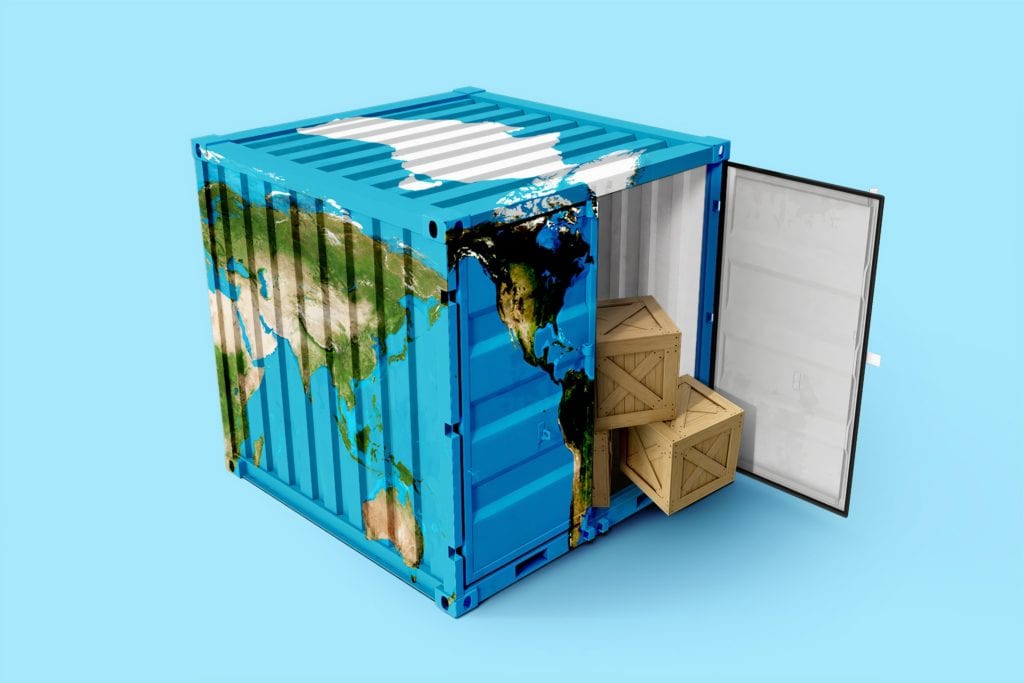In 2019, over 49.7 billion Canadian dollars worth of goods were exported to the European Union from Canada. Together, the European Union’s 28 members account for 16% of the world’s imports and exports. This graph shows the volume of exports of Canadian goods to the European Union from 2005 to 2019.
The Canada-European Union Comprehensive Economic and Trade Agreement (CETA) has opened up big opportunities for EU-Canada trade by making it easier to import and export goods and services. Under CETA, 98% of Canadian goods can now enter the EU duty-free. Gone are customs duties that were as high as 25%. All sectors of the Canadian economy benefit from easier access to trade with the EU.
These are some valuable resources and tips for anyone planning to export to the EU from Canada.
Do the Research
Before diving in, it’s always best to do as much research as possible so that you have a clear picture of the market opportunities. There are a lot of great resources on the internet that you can take advantage of.
You will want to research statistics about the type of product you are offering, what kinds of opportunities exist out there for you, and what European trends relate specifically to your niche. You can research trends online or subscribe to newsletters like those that are put out by various sector associations, trade press, and trade fairs.
Trade Helpdesk is a great resource for statistical trade data. ITC’s Trade Map has excellent data as well in the form of tables, graphs and maps – indicators on export performance, international demand, alternative markets, and competitive markets, as well as a directory of importing and exporting companies.
This video from the US International Trade Administration has helpful information about selecting initial export markets for your product.
Brexit
Since all of the legislation and regulations of Brexit are a work in progress, you must do the research and determine whether the U.K. is viable for your exporting business. For more information on Brexit and how to prepare for it, click here.
Also, Canada’s own government site.
Logistics and Customs Procedures
With so many different countries in the EU, shipping your products and clearing them through customs must also be well-researched.
The following documents are needed for customs clearance in Europe:
- Customs Import Declaration (SAD): This is the common import declaration form for all EU Member States.
- Commercial Invoice: The commercial invoice contains the basic information on the transaction and it is always required for customs clearance.
- Customs Value Declaration: The Customs Value Declaration is a document, which must be presented if the value of the goods exceeds €20,000.
The main purpose of the document is to fix the customs value for taxation and apply tariff duties.
- Freight Documents (Transport Documentation): Bill of landing, FIATA bill of landing, road waybill (CMR), air waybill (AWB), rail waybill (CIM), ATA Carnet, TIR Carnet, among others.
- Freight Insurance: The insurance invoice is required for customs clearance only when the relevant data does not appear in the commercial invoice.
- Packing List: The packing list (P/L) provides information on the imported items and the packaging details of each shipment, including weight, dimensions, handling issues, etc.
Helping Canadian Exporters
The Canadian Trade Commissioner Service (TCS) helps Canadian companies and organizations succeed globally. The TCS comprises a network of trade offices in Canada and around the world, including offices in 24 EU member states.
This network provides Canadian businesses with:
- on-the-ground intelligence
- problem-solving services
- qualified contacts
- strategic alliances
- practical advice on international markets
The TCS offers information about:
- national markets in the EU, including market facts and reports, information on trade events and practical advice on local markets
- specific sectors
- market opportunities
- finding EU business partners
Get help from the Trade Commissioner Service:
- Find a trade commissioner
- Step-by-Step Guide to Exporting
- Country and sector information for international business
One final thing to be aware of when doing business internationally is cultural differences. Remember that every country that is a member of the EU has its own unique cultural differences which may impact not only how you interact with them, but also what kind of products will sell well. Always take into consideration the business practices in your target country, such as meeting attire, when to schedule meetings, greetings, giving appropriate gifts, etc. If you do the research and demonstrate that you are sensitive and appreciative of the culture, it goes a long way in establishing trust with potential business partners.
